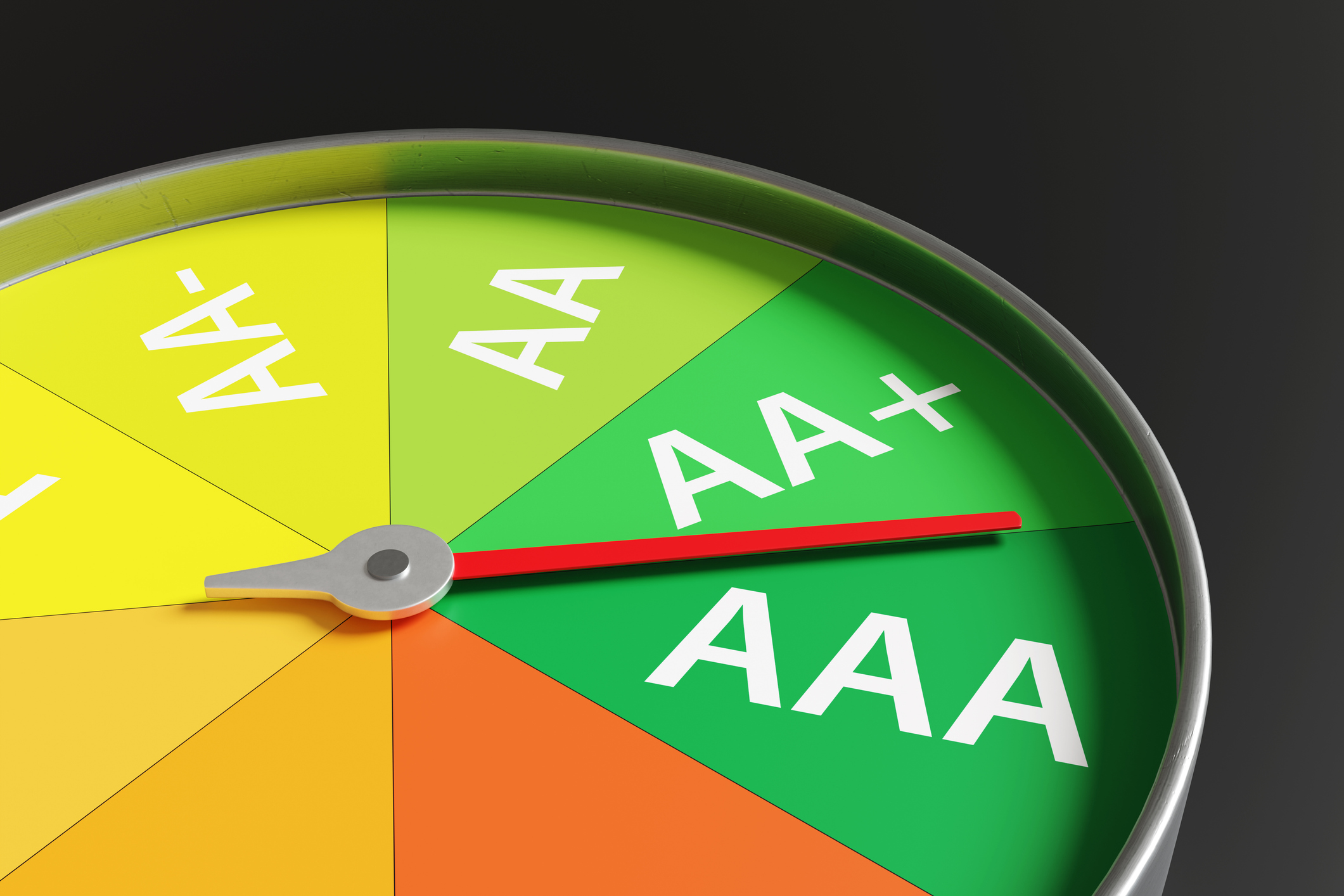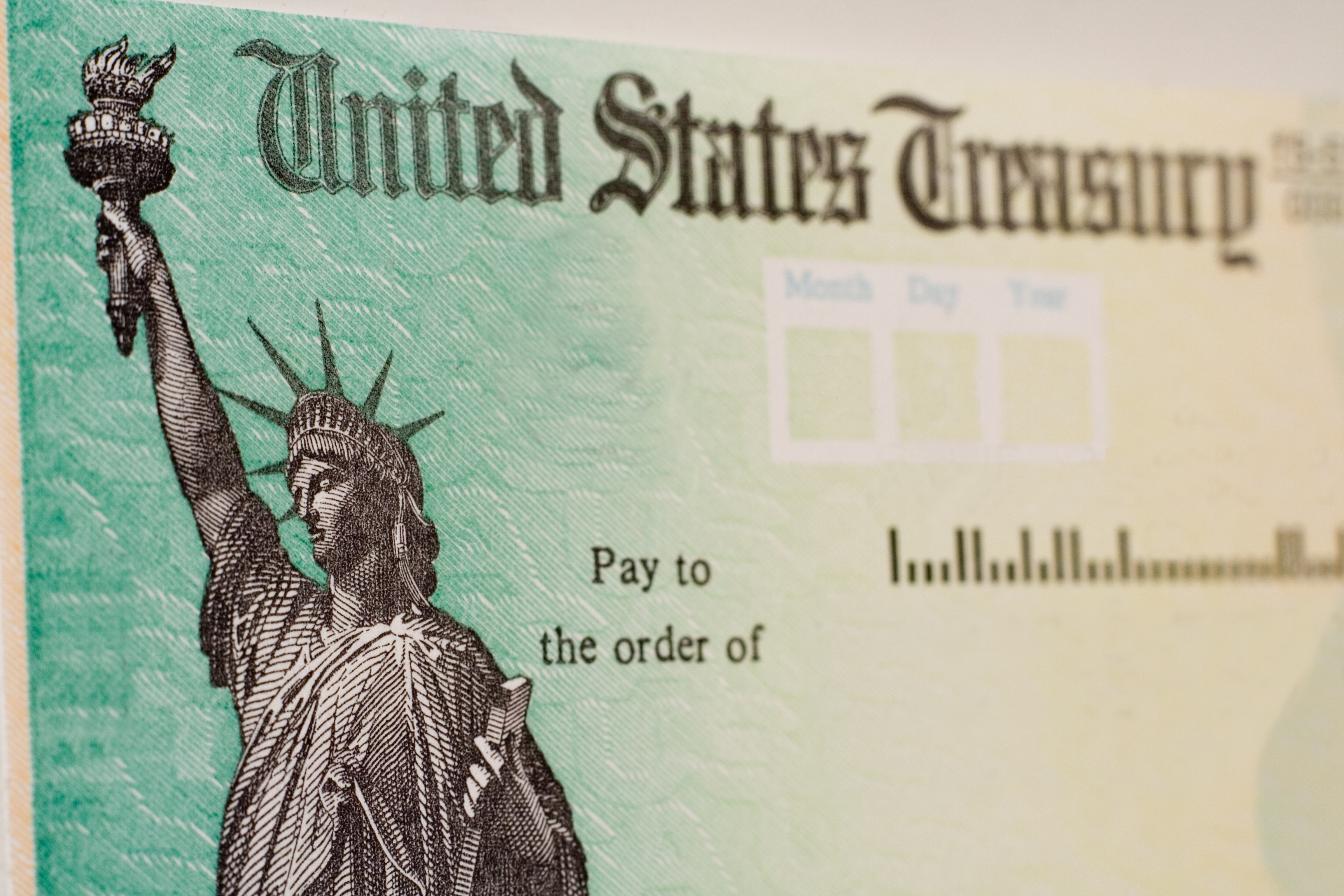Are Money-Market Funds as Good as Cash?
Their holdings may include debt issued by the likes of Bear Stearns, Freddie Mac, and some other less-than-ironclad lenders.

In stressful times, you may hear advisers and strategists recommend that investors raise their allocations to "cash." There are two reasons for doing so. First, cash, which is presumably risk free, protects your portfolio from losses. Second, raising cash builds reserves you can use to buy stocks, junk bonds or other assets at lower prices once the backdrop brightens.
But just what is cash? And is it as safe as it appears to be?
In finance, cash is more than the green paper you carry in your wallet. The financial world's definition of cash -- sometimes it's referred to as cash equivalents -- is any investment with a fixed value that is easy to buy and sell.

Sign up for Kiplinger’s Free E-Newsletters
Profit and prosper with the best of expert advice on investing, taxes, retirement, personal finance and more - straight to your e-mail.
Profit and prosper with the best of expert advice - straight to your e-mail.
This includes Lincolns and Hamiltons as well as savings and checking deposits and shares of money-market mutual funds. Short-term certificates of deposit and U.S. Treasury bills (those maturing within 90 days) also count. The bedrock assumption is that if you invest $1 in any of these forms, your investment is worth $1 anytime, no questions asked.
But financial engineers have also invented all sorts of other cash equivalents. These are short-term interest-earning investments that are designed to maintain a stable value -- that's behind the comparison to cash -- but that are not necessarily liquid and not guaranteed by the government.
These enhanced cash equivalents yield as much as a percentage point more than T-bills, one of their reasons for being. The other is that there are more savers and investors looking to park way more money than there are Treasury bills to own, even when the government runs a massive deficit.
So the expanded world of "cash" includes repurchase agreements, short-term floating-rate notes, collateralized loan agreements, short-term corporate notes, overnight commercial paper and variable-rate demand notes, to name just a few things.
The Financial Accounting Standards Board periodically discusses whether such instruments qualify as cash for a corporation to list as "cash and cash equivalents on its balance sheet." To qualify as such, says FASB, the investment must be "readily convertible to cash" with minimal or no change in the value. Bruce Bent, who invented the money-market fund 40 years ago, says that these enhanced cash instruments count as cash as long as their backers repay these short-term debt instruments immediately and in full.
Money-market funds hold several trillion dollars of these enhanced cash equivalents, which they disclose (but do not explain) in their reports to shareholders. Over the years, money-market funds have had no problem converting these instruments to the green stuff you get when you raid your ATM.
This liquidity is also why you can write checks against money-fund balances without first selling shares of the fund and waiting a day or two for the trade to clear. But as questions about the liquidity of previously invisible overnight transactions and other short-term obligations make headlines, the question is whether money-market funds will always deserve their unquestioned stature as cash.
Different styles. Money-market funds come in various forms. There are Treasury-only funds, government-only funds (meaning debt from government agencies as well as the Treasury) and a long list of general money funds, in such categories as "prime" funds and "first-tier" funds. Those words aren't particularly meaningful because all money-market funds profess high quality and pledge to keep a fixed price of $1 a share regardless of what happens to interest rates, the bond market, the economy, or the fund's parent company.
A Treasury-only fund is clearly the safest kind of money. Inspect the annual report of Fidelity U.S. Treasury MMF (symbol FDLXX) and you'll see a brief summary: 94% of assets are in U.S. Treasury bills that mature in less than six months and the rest are in Treasuries that mature in six to nine months. Nothing you need a professor to explain.
But there are some drawbacks. One is that the minimum investment is $25,000, ten times that of the minimum for Fidelity's other money funds. Two, the expense ratio of 0.49% is higher than for other Fidelity money funds. And, three, the yield is demonstrably lower. The current seven-day yield (as of March 19) is 1.98%, compared with 3.38% for Cash Reserves, Fidelity's most popular standard money fund. (Keep in mind that those yields have barely, if at all, felt the effects of the three-quarter percentage point cut in short-term rates engineered by the Federal Reserve on March 18.)
None of this is especially unusual, says Peter Crane, publisher of Money Fund Intelligence (www.cranedata.us). The large minimum is designed to limit the fund's size because T-bills are in limited supply. And because of the "flight to quality" by many investors as a result of turbulence in virtually all markets, Treasury yields are unusually puny relative to other cash instruments. Bent, whose Reserve U.S. Treasury fund (RUTXX) is entirely Treasuries, says that at the end of the day he sometimes has cash he was unable to invest because there are no Treasuries to buy. That also depresses yields.
Crane estimates that, in one month, Treasury funds will pay well below 1%. To avoid negative returns, he says, these funds will be forced to waive expenses if the Fed makes further rate cuts. In essence, this is the price of insurance: You're foregoing 1.5 percentage points now and possibly more later. At some point the mattress, or more sensibly, a fireproof safe-deposit box will pay as much as a Treasury-only money fund -- that is, zero.
The next step up the risk-return ladder would be a government-only money fund. Staying with Fidelity for the sake of comparison, you have Fidelity Government MMF (SPAXX), with a seven-day yield of 3.01%.
This fund's holdings are far different from the Treasury fund's. The holdings, as of the end of 2007, included a small dose of debt issued by Fannie Mae and Freddie Mac, which are government-sponsored but not actually the government.
One-quarter of the fund was in obligations of the Federal Home Loan Banks, which are safe. But then come hundreds of millions of dollars of "repurchase agreements," or repos, between the fund and Wall Street and European investment firms such as Lehman Brothers, UBS Warburg, Morgan Stanley and Deutsche Bank. You didn't see Bear Stearns, but that could be just chance: Hundreds of money funds bought short-term debt from Bear Stearns and held it as Bear walked the plank.
So where does the government enter into these repos? The glue is that these agreements with Wall Street are secured by government-backed mortgage debt held in reserve. If UBS or Lehman couldn't pay the fund, they'd have to give the fund the collateral.
The fund's prospectus says that it "normally invests at least 80% of assets in government securities and repurchase agreements for those securities." With that kind of language, you might expect to see 80% of the fund's assets in Treasury debt or in IOUs issued by the Federal Home Loan Banks, the Tennessee Valley Authority and other U.S. government branches. But there aren't nearly enough of those instruments to fill a billion-dollar fund. So the fund does what it does.
What's the difference, then, between this and a money fund that makes no pretense to be overwhelmingly invested in government IOUs? Look no further than Fidelity Cash Reserves (FDRXX), which has more than $120 billion in assets and, as mentioned earlier, a seven-day yield of 3.38%.
The huge fund has two advantages. First, its expense ratio of 0.43% is a few ticks lower than those of the smaller funds. Cash Reserves is also far more diversified.
A fifth of the fund's assets are is in certificates of deposit with major European and Japanese banks, which would seem to be in better shape than Bear Stearns and its cohorts. Then there is some commercial paper (short-term corporate loans) issued by General Electric, Dow Chemical, Kellogg, Home Depot, various insurance companies, and some other blue-chip corporations.
The repurchase agreements with investment banks represent only a quarter of the fund's assets. The difference between these Repos and those in the government money fund is that, instead of being collateralized by government-backed mortgages, Cash Reserve's Repos are backed by banks and other corporations.
Because investor concerns focus on mortgages, I'd argue that Cash Reserves is a better parking place for your money than the Fidelity government fund is. It's safer and yields more to boot.
Fidelity's money fund list also includes tax-exempt and institutional funds. Other major investment companies and mutual funds sponsor several money funds, so you might want to draw on this descriptions above to help make your choice.
State of the universe. Peter Crane, who reads shareholder reports and prospectuses for a living, says trying to spot flaws in a money-fund portfolio is impossible. His analogy: You're flying in a 747 over the Atlantic when the ride gets unsteady. So you burst into the cockpit (try to forget 9/11) and study the instrumentation to see if the plane has a problem. Good luck.
Yet Crane isn't totally blasé. He figures that, in the past year, more than a dozen sponsors have had to inject their own capital into money-market funds to avoid writing down the value of the portfolios from $1 a share to 99 cents or less.
This prospect, called "breaking the buck," is the nightmare that faces every money-fund manager and shareholder. And it doesn't always have to be disclosed; insiders like Crane or other full-time money-fund followers may get wind of it in the same way that any reporter gets a good story.
If a fund sponsor declined to make shareholders whole, it would almost certainly be a kiss of death for the broken fund. The run to get cash out of the money fund -- and perhaps from the sponsor's stock and bond funds, too -- would be devastating. There is a chance that the stock market would plunge in response -- after all, the Fed and J.P. Morgan can't rescue everybody.
As a result, fund sponsors feel obligated to make good on their money funds in ways that they don't for hedge funds, which can tell their investors that they can't get their money out until a certain date or ask them to pony up more capital.
The fear of the moment -- that a Bear Stearns or some other investment bank will become insolvent and not be rescued -- seems unlikely to cost any money-fund shareholders. But you can't be as certain of that today as you could have been a year ago.
Many sponsors, analysts and investors used to think that ultra-short bond funds and short-term floating bank-loan funds were nearly as money-market funds, but that thinking is in shreds after big losses at such funds as Fidelity Ultra-Short Bond (FUSFX) and Schwab Yield Plus (SWYPX).
So, what do you do? One approach is to use only money funds from large investment firms that have the wherewithal to inject capital in case of a trading accident.
Fidelity, Schwab, Vanguard, T. Rowe Price, Merrill Lynch, the big life insurance companies and money-center banks fit the bill. This is no time to mess around with unknowns and amateurs or outfits that offer money funds only as an afterthought.
A second strategy would be to diversify among money funds. You could hold a Treasury fund for essential household money and a general fund for your investment accounts.
Some financial planners suggest using only Treasury money funds. But if you're going to do that, you can buy Treasury securities directly (www.treasurydirect.gov) and save the management fee. With yields heading toward 1% or less, that 0.50% in fund charges matters.
Finally, don't fall for crazy horror stories. Assets in U.S. money funds total about $3.5 trillion, and there's still gobs more liquidity than that in the world. The European and Japanese economies and currencies are sound, and their financial institutions are big lenders to U.S. money funds.
So is this still cash? Yes it is. Until further notice.
Get Kiplinger Today newsletter — free
Profit and prosper with the best of Kiplinger's advice on investing, taxes, retirement, personal finance and much more. Delivered daily. Enter your email in the box and click Sign Me Up.

-
 80-Year Old Dick Durbin, the Senate’s No. 2 Democrat, To Retire After 44 Years in Congress
80-Year Old Dick Durbin, the Senate’s No. 2 Democrat, To Retire After 44 Years in Congress‘In my heart, I know it’s time to pass the torch,’ Senator Durbin said in a statement.
By Kathryn Pomroy
-
 Stock Market Today: Stocks Rise on Good Volatility
Stock Market Today: Stocks Rise on Good VolatilityInvestors, traders and speculators continue to process the "known unknown" of global tariff-and-trade war negotiations.
By David Dittman
-
 Why Investors Needn't Worry About U.S. Credit Downgrade
Why Investors Needn't Worry About U.S. Credit DowngradeFitch Ratings The United States saw its credit rating downgraded for just the second time in history, but experts aren't worried about the long-term damage to stocks.
By Dan Burrows
-
 Bond Ratings and What They Mean
Bond Ratings and What They Meaninvesting Bond ratings measure the creditworthiness of your bond issuer. Understanding bond ratings can help you limit your risk and maximize your yield.
By Donna LeValley
-
 Bond Basics: Treasuries
Bond Basics: Treasuriesinvesting Understand the different types of U.S. treasuries and how they work.
By Donna LeValley
-
 Bond Basics: Ownership
Bond Basics: Ownershipinvesting Bonds come in a variety of forms, but they all share these basic traits.
By Donna LeValley
-
 Bond Basics: Pick Your Type
Bond Basics: Pick Your Typeinvesting Bonds offer a variety of ways to grow wealth and fortify your portfolio. Learn about the types of bonds and how they work.
By Donna LeValley
-
 Silicon Valley Bank, Signature Bank Failures Send Bank Stocks Reeling
Silicon Valley Bank, Signature Bank Failures Send Bank Stocks ReelingFinancial stocks continued to sell off following the collapse of regional lenders SVB and Signature Bank.
By Karee Venema
-
 Stock Market Today: S&P 500 Snaps Weekly Losing Streak
Stock Market Today: S&P 500 Snaps Weekly Losing StreakAI stocks were big winners on Friday after C3.ai posted solid earnings and guidance.
By Karee Venema
-
 Stock Market Today: Stocks Bounce Back; UNP Rallies After CEO Splits
Stock Market Today: Stocks Bounce Back; UNP Rallies After CEO SplitsThe major benchmarks closed higher Monday after notching their worst week of the year on Friday.
By Karee Venema